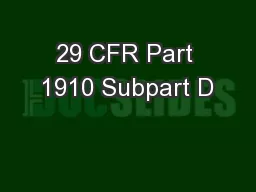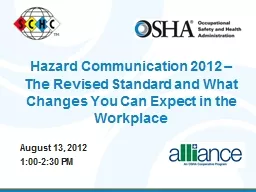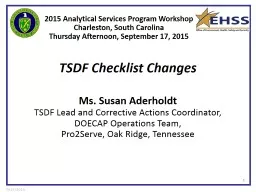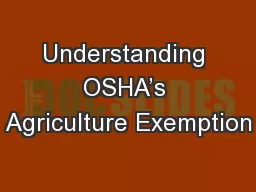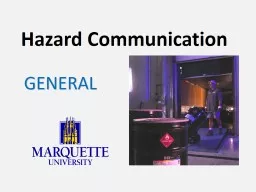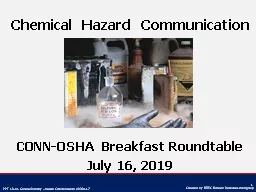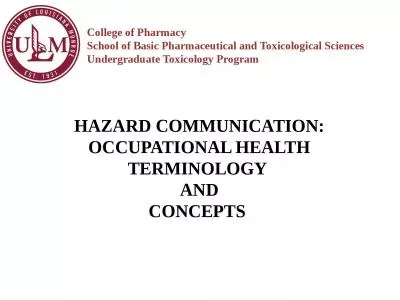PPT-Hazard Communication 29 CFR 1910.1200
Author : marina-yarberry | Published Date : 2018-09-16
Objectives We will cover Purpose of hazard communication in the workplace Role management and employees play in complying with this standard General requirements
Presentation Embed Code
Download Presentation
Download Presentation The PPT/PDF document "Hazard Communication 29 CFR 1910.1200" is the property of its rightful owner. Permission is granted to download and print the materials on this website for personal, non-commercial use only, and to display it on your personal computer provided you do not modify the materials and that you retain all copyright notices contained in the materials. By downloading content from our website, you accept the terms of this agreement.
Hazard Communication 29 CFR 1910.1200: Transcript
Download Rules Of Document
"Hazard Communication 29 CFR 1910.1200"The content belongs to its owner. You may download and print it for personal use, without modification, and keep all copyright notices. By downloading, you agree to these terms.
Related Documents

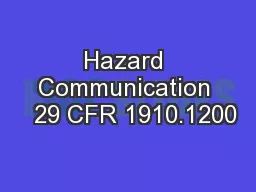
![THE INDIAN ELECTRICITY ACT, 1910 , 1910 th March, 1910] CONTENTS Prel](https://thumbs.docslides.com/342681/the-indian-electricity-act-1910-1910-th-march-1910-con.jpg)
